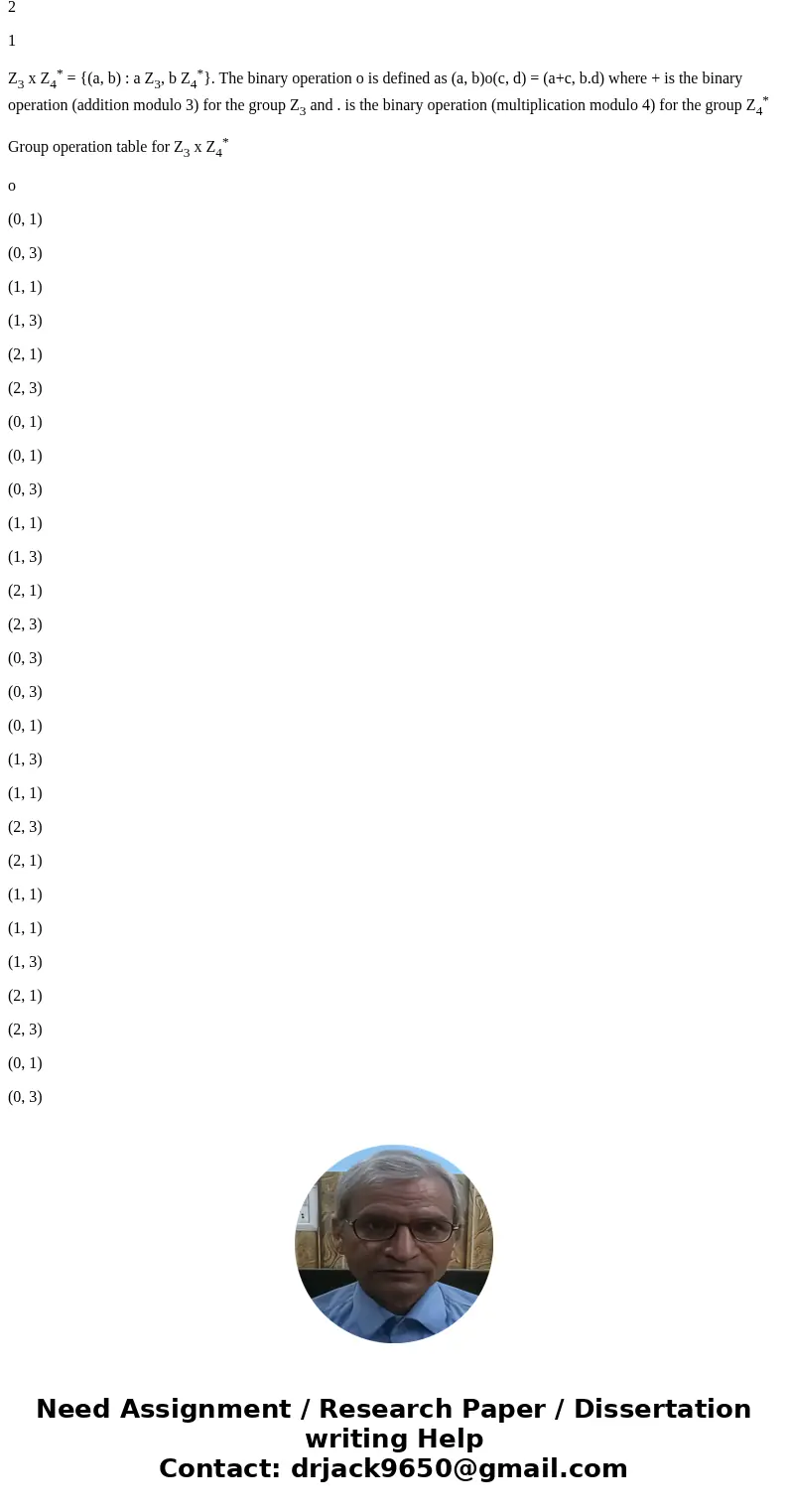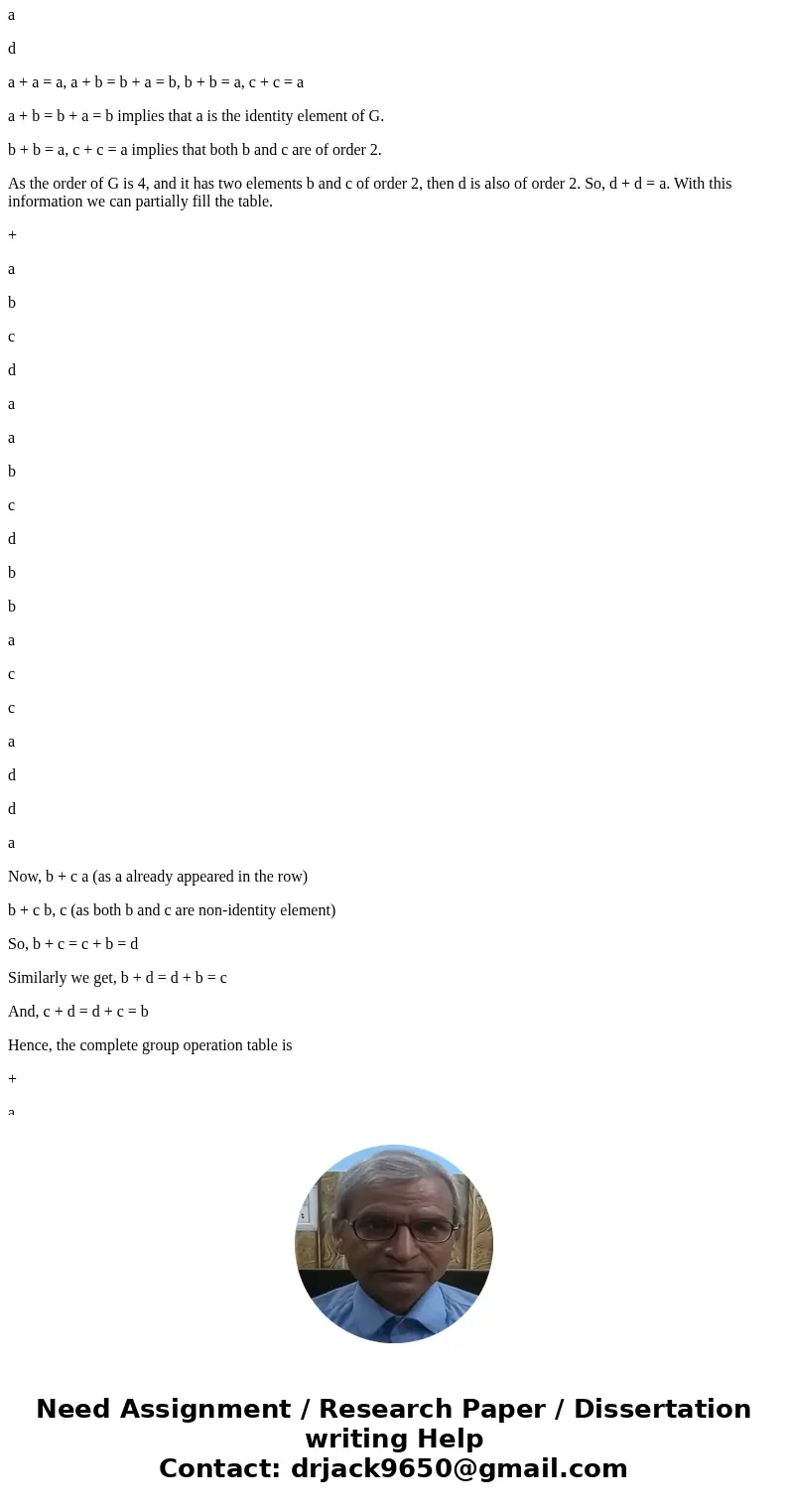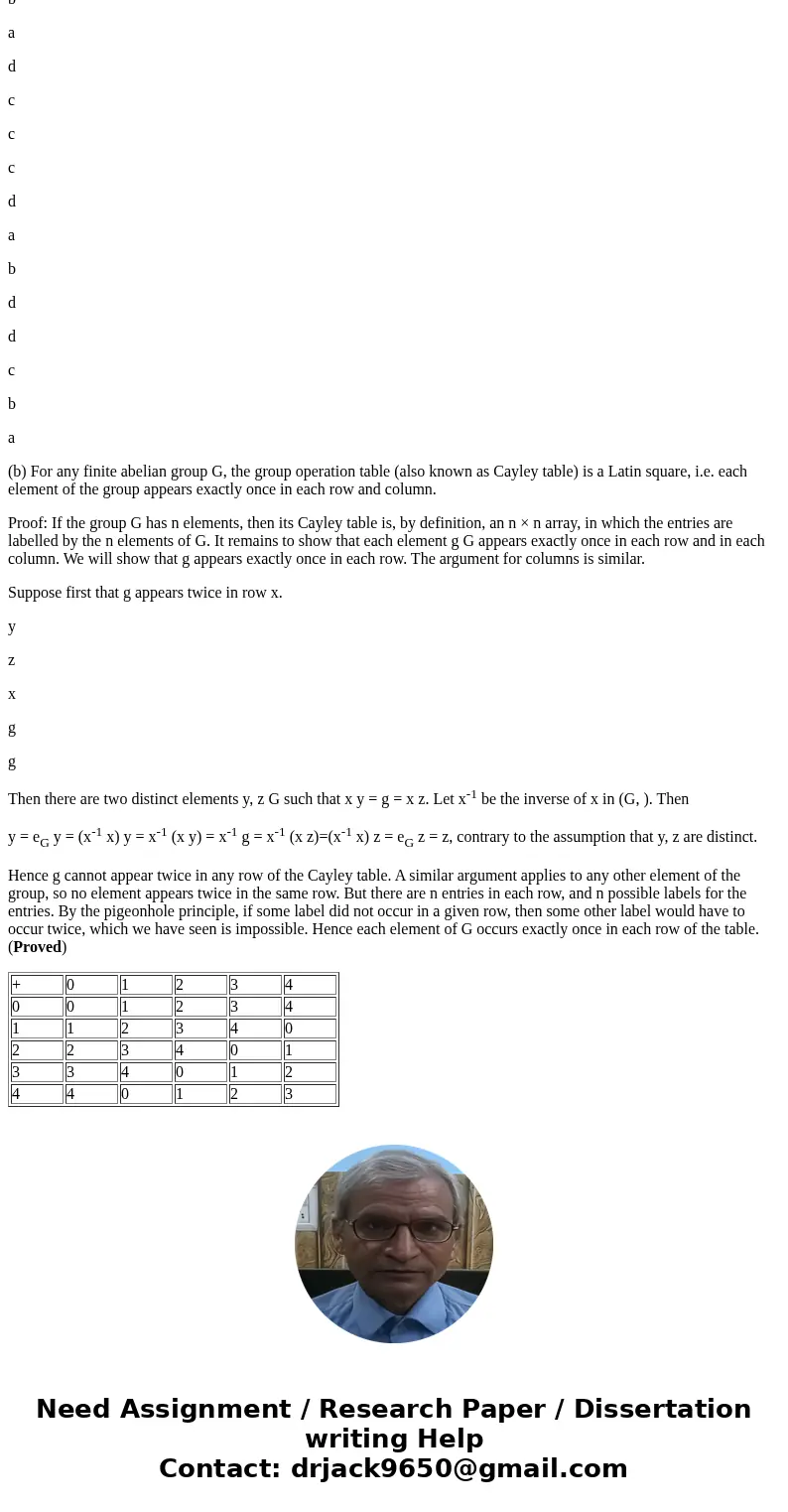For a finite abelian group one can completely specify the gr
Solution
(a) Group operation table for Z5
+
0
1
2
3
4
0
0
1
2
3
4
1
1
2
3
4
0
2
2
3
4
0
1
3
3
4
0
1
2
4
4
0
1
2
3
Group operation table for Z5*
.
1
2
3
4
1
1
2
3
4
2
2
4
1
3
3
3
1
4
2
4
4
3
2
1
Z3 x Z4* = {(a, b) : a Z3, b Z4*}. The binary operation o is defined as (a, b)o(c, d) = (a+c, b.d) where + is the binary operation (addition modulo 3) for the group Z3 and . is the binary operation (multiplication modulo 4) for the group Z4*
Group operation table for Z3 x Z4*
o
(0, 1)
(0, 3)
(1, 1)
(1, 3)
(2, 1)
(2, 3)
(0, 1)
(0, 1)
(0, 3)
(1, 1)
(1, 3)
(2, 1)
(2, 3)
(0, 3)
(0, 3)
(0, 1)
(1, 3)
(1, 1)
(2, 3)
(2, 1)
(1, 1)
(1, 1)
(1, 3)
(2, 1)
(2, 3)
(0, 1)
(0, 3)
(1, 3)
(1, 3)
(1, 1)
(2, 3)
(2, 1)
(0, 3)
(0, 1)
(2, 1)
(2, 1)
(2, 3)
(0, 1)
(0, 3)
(1, 1)
(1, 3)
(2, 3)
(2, 3)
(2, 1)
(0, 3)
(0, 1)
(1, 3)
(1, 1)
(c) G is an abelian group, G = {a, b, c, d}. The group operation table (incomplete) is defined as
+
a
b
c
d
a
a
b
b
a
c
a
d
a + a = a, a + b = b + a = b, b + b = a, c + c = a
a + b = b + a = b implies that a is the identity element of G.
b + b = a, c + c = a implies that both b and c are of order 2.
As the order of G is 4, and it has two elements b and c of order 2, then d is also of order 2. So, d + d = a. With this information we can partially fill the table.
+
a
b
c
d
a
a
b
c
d
b
b
a
c
c
a
d
d
a
Now, b + c a (as a already appeared in the row)
b + c b, c (as both b and c are non-identity element)
So, b + c = c + b = d
Similarly we get, b + d = d + b = c
And, c + d = d + c = b
Hence, the complete group operation table is
+
a
b
c
d
a
a
b
c
d
b
b
a
d
c
c
c
d
a
b
d
d
c
b
a
(b) For any finite abelian group G, the group operation table (also known as Cayley table) is a Latin square, i.e. each element of the group appears exactly once in each row and column.
Proof: If the group G has n elements, then its Cayley table is, by definition, an n × n array, in which the entries are labelled by the n elements of G. It remains to show that each element g G appears exactly once in each row and in each column. We will show that g appears exactly once in each row. The argument for columns is similar.
Suppose first that g appears twice in row x.
y
z
x
g
g
Then there are two distinct elements y, z G such that x y = g = x z. Let x-1 be the inverse of x in (G, ). Then
y = eG y = (x-1 x) y = x-1 (x y) = x-1 g = x-1 (x z)=(x-1 x) z = eG z = z, contrary to the assumption that y, z are distinct.
Hence g cannot appear twice in any row of the Cayley table. A similar argument applies to any other element of the group, so no element appears twice in the same row. But there are n entries in each row, and n possible labels for the entries. By the pigeonhole principle, if some label did not occur in a given row, then some other label would have to occur twice, which we have seen is impossible. Hence each element of G occurs exactly once in each row of the table. (Proved)
| + | 0 | 1 | 2 | 3 | 4 |
| 0 | 0 | 1 | 2 | 3 | 4 |
| 1 | 1 | 2 | 3 | 4 | 0 |
| 2 | 2 | 3 | 4 | 0 | 1 |
| 3 | 3 | 4 | 0 | 1 | 2 |
| 4 | 4 | 0 | 1 | 2 | 3 |







 Homework Sourse
Homework Sourse